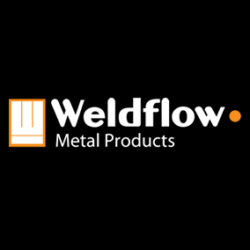Many variables will impact the price of a custom metal fabrication job when using laser-cutting technology. Besides the type and quantity of raw materials used, there are several factors to consider in sheet metal fabrication.
Let’s discuss these in detail.
Mechanical Labour
The labour fees for a fully trained workforce will always be higher when using a laser-cutting machine. In fact, the more complex the design, the more skilled labour you’ll need to hire for custom metal fabrication.
Machine Installation
Laser-cutting technology is ideal for sheet metal fabrication. However, you must consider the capital investment that goes into setting up the tech. To determine the cost of laser-cutting equipment, consider the type of laser machine first.
While CO2 lasers are common industry tools, they are limited in their operation. Your business may require high-volume production. A fiber laser can offer better, faster, and more accurate cuts without increasing operational costs.
Cost of Raw Material
The price of raw materials and their availability will impact the cost of any metal fabrication project. However, this depends on the fabrication technique.
For instance, laser-cutting machines can shape metal parts within the same material thickness. As a result, laser technology helps reduce the cost of material acquisition.
Even your warehouse location affects overall costs when components need transportation. The nearer the metal fabricators are to a source outlet, the cheaper the transport costs will be.
Quantity of Raw Material
Quantity is an essential factor to consider for any metal fabrication quote. The unit price decreases when a vendor orders sheet metal parts and components in bulk for a project. For this reason, you should order in large quantities to access a discount on that order.
Design for Manufacturability
DFM (design for manufacturability) aims toward optimising the manufacturing process to reduce costs. This engineering concept emphasises the energy efficiency of core design elements. These are critical factors influencing the total cost of metal fabrication.
It challenges the fabrication process at all levels: component, sub-system, and system. Take sheet metal fabrication in a single punch versus complex part production as an example to make pressure vessels, tanks, penstock, reservoirs and standpipes. It costs less to produce a sheet metal design compared to producing complex bends.
Design for Assembly
How an item fits together will inadvertently affect your manufacturing costs. DFA seeks to simplify a product design to reduce assembly costs. Since the design for assembly is a physical task, it requires a large workforce. Such a factor influences the number of workers part of the fabrication process.
Seventy percent of a product’s final cost depends on the design process and the remaining 30% on manufacturing. For this reason, it’s important to resolve potential issues at the earliest stages of product development. Considering such factors will allow you to control the total manufacturing cost.
For professional expertise, get in touch with an online sheet metal fabrication service.
Find an Expert Steel Metal Manufacturer Near You
There’s no one-size-fits-all solution! It’s best to consult a professional sheet metal fabrication company and address all your concerns.
If you’re looking for steel fabricators in Toronto, speak to our experts at Weldflow Metal Products. We have more than 40 years of experience in custom steel fabrication, offering solutions tailored to your needs. Contact us now for more information.


